Cleaning a dog’s ears is a vital part of maintaining their overall health and comfort. Regular ear cleaning helps prevent infections, wax buildup, and irritation, especially in breeds prone to ear problems or those with floppy ears. Keeping ears clean allows owners to spot early signs of issues before they become serious.
Understanding the proper way to clean a dog’s ears is essential to avoid causing harm or discomfort. Many dogs need consistent care to remove dirt and debris trapped in the ear canal, which their natural grooming won’t always clear away. This article will guide readers through safe and effective ear-cleaning practices.
Table of Content
- Why Dog Ear Cleaning Is Important
- Understanding Dog Ear Anatomy
- How Often to Clean Dog Ears
- Recommended Dog Ear Cleaning Products
- Common Ear Problems in Dogs
- How to Clean Dog Ears Safely
- Identifying and Dealing With Dog Ear Infections
- Preventing Ear Problems in Dogs
- When to See a Veterinaria
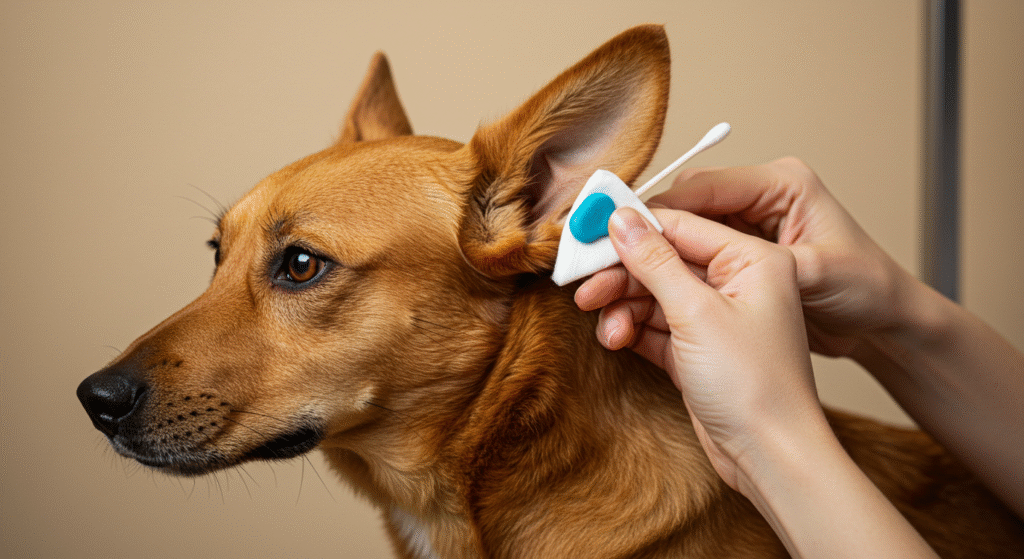
Why Dog Ear Cleaning Is Important
Regular ear cleaning supports a dog’s overall ear health by managing wax buildup, reducing moisture, and preventing irritants. Maintaining clean ears allows early detection of problems and helps avoid painful infections.
Health Benefits
Cleaning a dog’s ears removes excess wax, dirt, and debris, which can trap moisture and bacteria. This hygiene step promotes good ventilation within the ear canal, reducing the risk of inflammation.
Dogs with floppy or hairy ears, or those prone to allergies, benefit most from regular cleaning. It helps maintain a healthy balance of ear bacteria and prevents discomfort related to itchiness or swelling.
Regular inspections during cleaning also enable owners to spot signs of ear issues, such as redness or unusual odors, allowing for timely veterinary care.
Risks of Neglecting Ear Care
Ignoring ear hygiene increases the risk of infections caused by bacteria, yeast, or parasites like ear mites. Untreated infections can cause pain, swelling, discharge, and lead to chronic ear problems.
Excess wax and debris create an environment favorable to microbial growth. This may lead to frequent scratching and head shaking, causing further damage or secondary infections.
In severe cases, untreated infections can affect hearing or spread, necessitating extensive treatment or surgery.
Preventing Dog Ear Infection
Preventing infections starts with a consistent ear cleaning routine using products safe for canine ears. Cleaning should be gentle to avoid injuring the sensitive canal lining.
Owners should focus on removing visible debris and drying the ear canal, especially after swimming or bathing, to reduce moisture buildup.
Regular cleaning paired with monitoring for symptoms like redness, odor, or discharge helps catch early infections. Veterinary advice is crucial if persistent issues or pain arise.
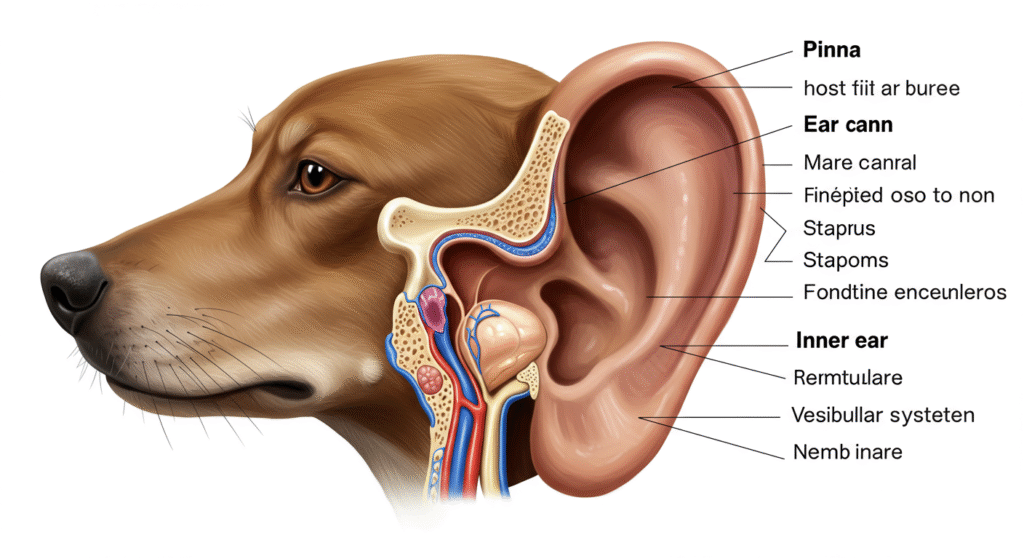
Understanding Dog Ear Anatomy
A dog’s ear is a complex structure designed not only for hearing but also for maintaining balance. Its unique shape and internal design affect how owners should approach ear cleaning, especially considering breed-specific traits and canal structure.
Differences Between Dog Breeds
Dog breeds vary significantly in ear shape, size, and hair growth inside the ear canal. Breeds with long, floppy ears, such as Cocker Spaniels or Basset Hounds, have ears that create warm, moist environments. This can trap dirt and moisture, increasing the risk of infections.
In contrast, breeds with upright ears, like German Shepherds or Siberian Huskies, typically have better air circulation inside the ear canal. This reduces buildup but does not eliminate the need for regular cleaning.
Some breeds also have dense hair growth inside their ear canals, requiring occasional trimming to prevent blockage. Understanding these differences helps identify how often and carefully ear cleaning should be performed to avoid irritation or injury.
How Ear Structure Affects Cleaning
The dog’s ear canal is L-shaped, consisting of a vertical canal that makes nearly a 90-degree turn into a horizontal canal before reaching the eardrum. This shape protects the eardrum but also means debris and wax can accumulate in the bend.
Because of this structure, cleaning requires gentle techniques and appropriate tools to reach the deeper parts without causing damage. Owners must avoid inserting anything deep into the canal and instead focus on cleaning the accessible outer areas.
The presence of ceruminous glands produces earwax that naturally traps dirt and moisture. Overproduction of wax or moisture buildup can lead to infections, so regular but careful cleaning is necessary to maintain ear health and prevent complications.
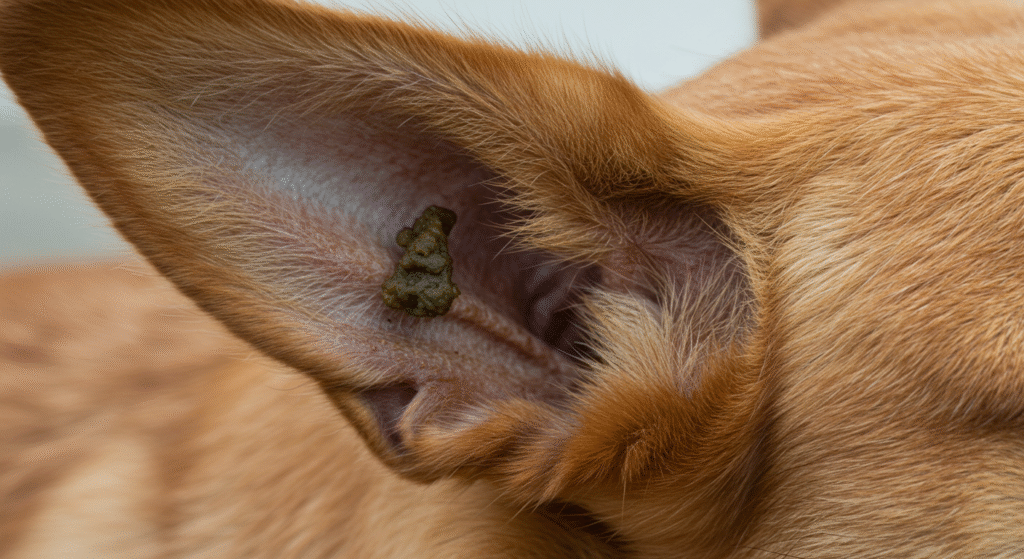
How Often to Clean Dog Ears
The frequency of cleaning a dog’s ears varies depending on several factors specific to each dog. Some require only occasional maintenance, while others need frequent attention to prevent infections or discomfort.
Factors Influencing Frequency
The breed has a significant impact on how often dog ears should be cleaned. Dogs with long, floppy ears, like Cocker Spaniels or Basset Hounds, tend to trap moisture and debris more, which increases cleaning frequency.
Lifestyle also plays a role. Dogs that swim regularly or spend a lot of time outdoors may need ear cleaning after each swim or outdoor activity to remove moisture and prevent infections.
Age and health condition matter too. Puppies can be trained early for routine cleaning, while older dogs with a history of ear infections may need more frequent care. On average, monthly cleaning is common, but dogs prone to issues may require weekly or even daily cleaning during treatment.
Signs Your Dog Needs Ear Cleaning
Visible debris or wax buildup is a clear sign the ears need cleaning. Excess wax appears as dark or yellowish material inside the ear canal.
Unpleasant odor from the ear indicates possible infection or bacterial growth that requires prompt cleaning or veterinary care.
Frequent scratching, head shaking, or redness around the ear can indicate irritation or infection, signaling the need to clean and possibly seek treatment.
Additionally, if your dog shows signs of discomfort or sensitivity when the ear is touched, it is important to check and clean the ears carefully or consult a vet.
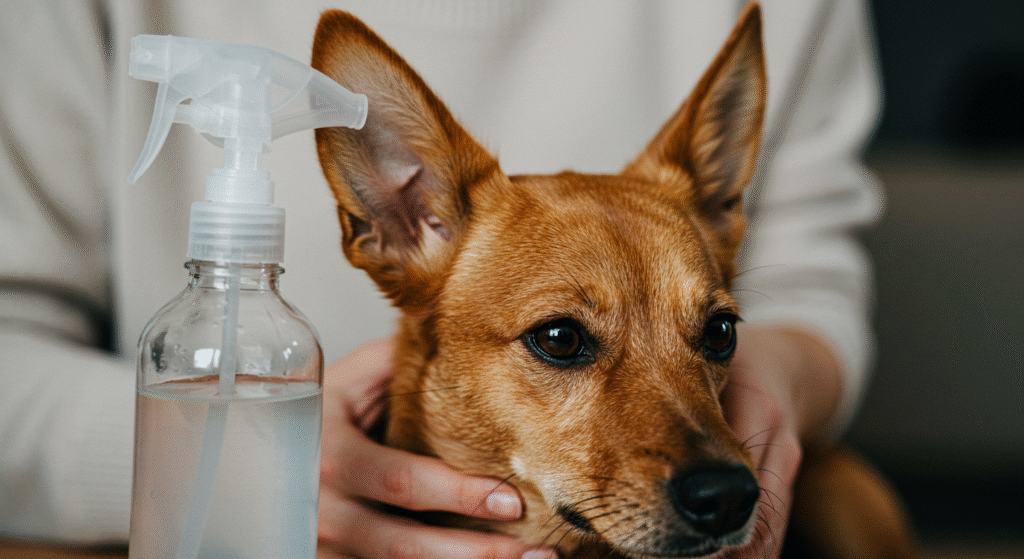
Recommended Dog Ear Cleaning Products
Effective ear cleaning products help maintain a dog’s ear health by removing wax, dirt, and debris while preventing infections. Choosing the right product depends on the dog’s ear type, sensitivity, and any existing conditions.
Best Dog Ear Cleaning Solution
The best dog ear cleaning solutions are usually veterinarian-approved formulas that balance effectiveness with gentleness. These solutions often contain ingredients that dissolve wax and fight bacteria or yeast without irritating the ear canal.
Look for products that are:
- Enzyme-based for natural breakdown of debris
- Alcohol-free to avoid drying out the skin
- pH-balanced specifically for canine ears
Popular options include solutions like Zymox Otic, which requires no pre-cleaning and works well on sensitive ears. Regular use after baths, swims, or rainy days helps reduce infection risk, especially for dogs with floppy or heavily furred ears.
Natural Dog Ear Cleaning Alternatives
Some owners prefer natural methods to clean their dog’s ears. A common and safe homemade cleaner combines equal parts distilled water and apple cider vinegar. This mixture helps balance pH and prevent bacterial growth.
Other natural ingredients include:
- Aloe vera for its soothing effects
- Coconut oil, which can act as a mild antimicrobial
Natural alternatives should be used cautiously, avoiding deep ear canal insertion. Dogs prone to infections or with severe symptoms should still use vet-recommended solutions or seek veterinary care.
Using Dog Ear Cleaning Wipes
Dog ear cleaning wipes offer a convenient way to maintain ear hygiene, especially for surface cleaning between full cleanses. They quickly remove dirt, wax, and odor without the need for liquids, which some dogs dislike.
Choose wipes that are:
- Hypoallergenic and fragrance-free to reduce irritation
- Moist but not dripping for easy handling
- Designed for sensitive skin with gentle cleansers
While wipes are not a substitute for deep cleaning, they are useful for regular maintenance and dogs who resist liquid cleaners. They can be especially effective for quick cleanup after walks or outdoor play.
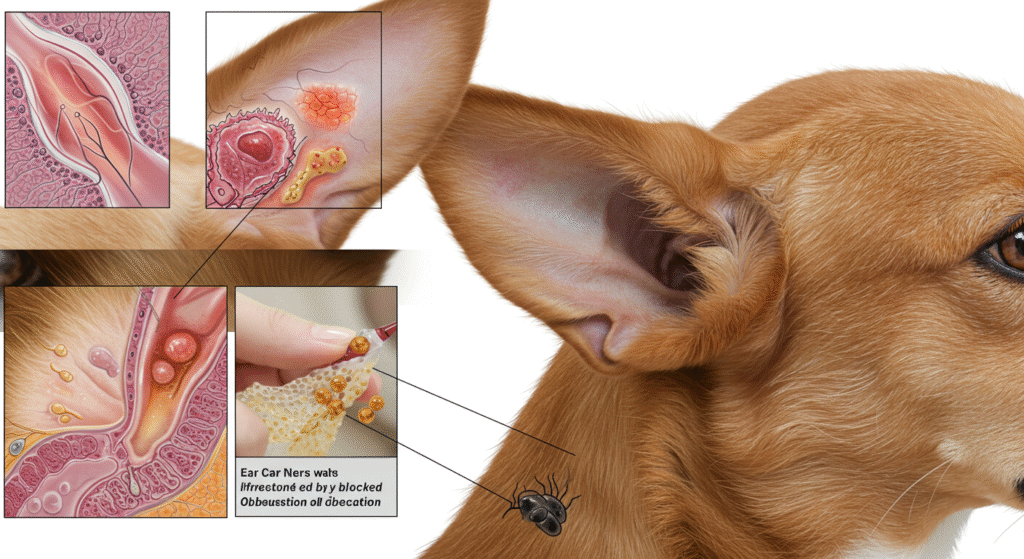
5. Common Ear Problems in Dogs
Here’s a table highlighting common ear issues in dogs:
| Ear Issue | Symptoms | Causes | Treatment Needed |
|---|---|---|---|
| Ear Wax Buildup | Dark brown/yellow wax, mild odor | Lack of cleaning, oily skin | Regular cleaning |
| Yeast Infection | Smelly ears, redness, scratching | Moisture, allergies | Vet medication |
| Bacterial Infection | Pus, swelling, severe pain | Dirty ears, immune issues | Antibiotics |
| Ear Mites | Coffee-ground-like debris, itching | Parasitic infestation | Vet treatment |
| Hematoma | Swollen ear flap, fluid pocket | Vigorous scratching/shaking | Surgical/medical |
| Foreign Body | Head tilting, pawing, sudden pain | Grass seeds, dirt, insects | Immediate vet |
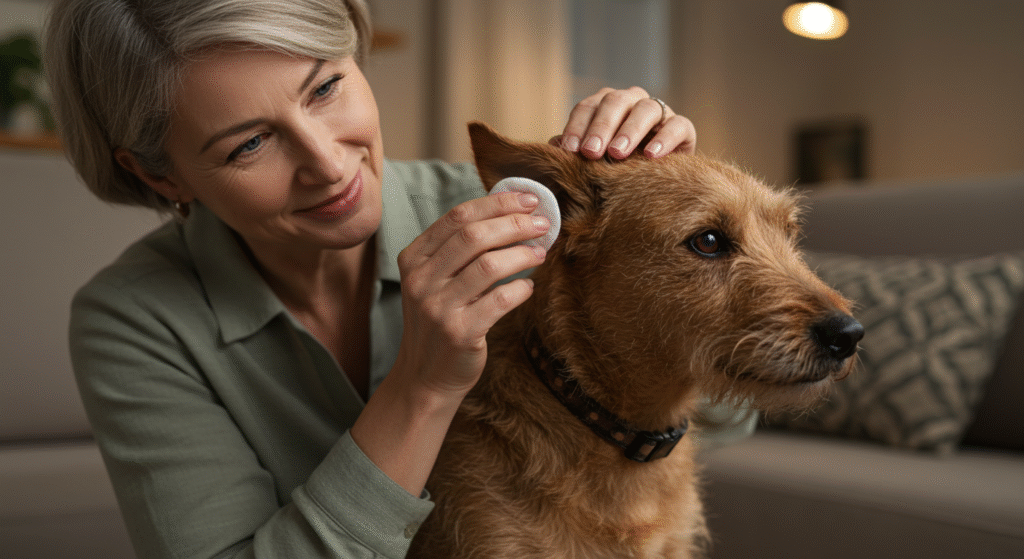
How to Clean Dog Ears Safely
Cleaning a dog’s ears requires careful preparation, proper techniques, and attention to aftercare. Using the right tools and avoiding common errors helps prevent irritation or infection. Monitoring the ears after cleaning ensures they stay healthy.
Step-by-Step Ear Cleaning Process
First, gather supplies: a vet-approved ear cleaner, cotton balls or gauze, and treats to keep the dog calm. Avoid cotton swabs that can damage the ear canal.
Begin by gently lifting the ear flap. Apply the ear cleaner into the ear canal, filling it but not overflowing. Massage the base of the ear for 20-30 seconds to loosen debris and wax.
Next, let the dog shake its head. Use cotton balls or gauze to wipe out the loosened dirt from the ear flap and canal opening. Repeat if necessary but avoid overcleaning.
Common Mistakes to Avoid
Using harsh products like hydrogen peroxide or alcohol can dry out and irritate the ear. Avoid inserting objects deep into the ear canal, which can injure the ear drum.
Cleaning too frequently may cause inflammation. Only clean when visibly dirty or if the dog has specific issues like infections or allergies. Ignoring signs of pain or discomfort during cleaning can worsen the problem.
Failing to dry ears well after cleaning or after swimming increases the risk of infection. Always observe the dog for redness, odor, or discharge after cleaning, which signals a veterinary check is needed.
Post-Cleaning Care Tips
After cleaning, gently dry the ear with a soft cloth or cotton ball to remove moisture. Keep ears dry, especially if the dog swims or bathes frequently.
Use treats and positive reinforcement to create a calm and cooperative experience for future cleanings. Monitor ears weekly for changes in smell, redness, or swelling.
If the dog shows signs of head shaking, scratching, or discomfort, consult a vet promptly. Proper ongoing care supports ear health and prevents chronic issues.
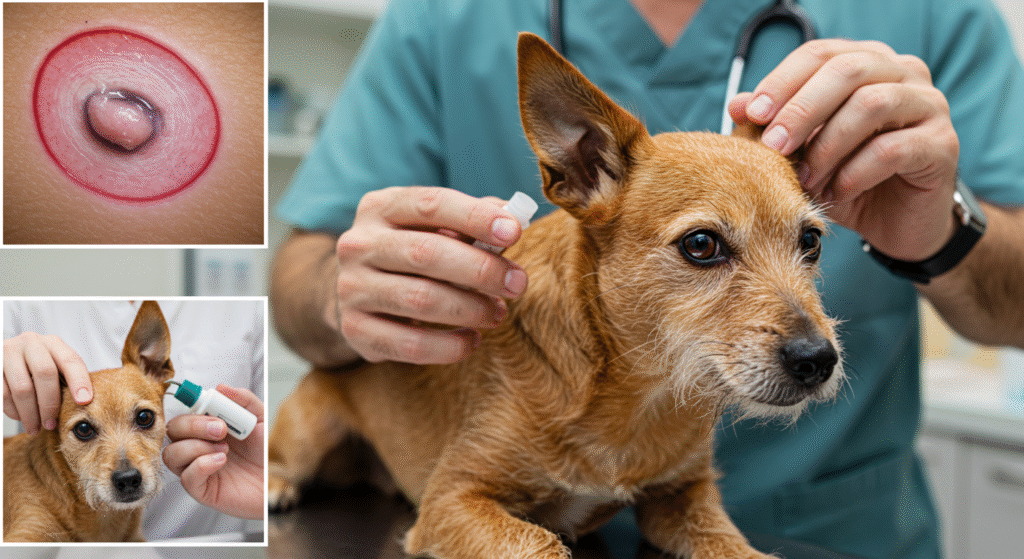
Identifying and Dealing With Dog Ear Infections
Recognizing the signs of a dog ear infection early is crucial to prevent complications. Proper care involves observing symptoms carefully and knowing when veterinary care is necessary to ensure effective treatment.
Symptoms of Dog Ear Infections
Common symptoms include redness and swelling inside the ear canal. Dogs may also exhibit frequent scratching or rubbing of their ears due to discomfort.
Discharge is another key indicator, often accompanied by a foul odor. Some dogs may shake their heads more than usual or show signs of pain when the ear is touched.
Other less obvious symptoms include balance problems or tilting the head. These require prompt attention because they can signal a more severe infection.
When to See a Veterinarian
If symptoms persist for more than a day or worsen, a veterinarian should be consulted. Professional diagnosis is important, especially if there is thick discharge, bleeding, or intense swelling.
Also seek veterinary care if the dog shows signs of hearing loss, facial paralysis, or systemic illness like fever. Self-treatment without professional input can risk complications.
Veterinarians can prescribe appropriate medications, such as topical antibiotics or antifungals, and may perform ear cleaning safely to avoid further damage. Persistent ear infections often require professional intervention.

Preventing Ear Problems in Dogs
Proper ear care reduces the risk of infections and discomfort. Consistent cleaning, monitoring, and adjustments for specific breeds are essential for maintaining healthy ears.
Regular Maintenance Tips
Dogs require routine ear inspections to catch early signs of issues. Owners should look for redness, odor, or unusual discharge. Cleaning only when necessary prevents irritation from overcleaning.
After baths or swimming, ears should be dried thoroughly to avoid trapped moisture, which fosters infections. A vet-approved ear cleaner applied gently with a cotton ball can remove wax and debris without harming the ear canal.
Getting dogs accustomed to ear handling from a young age can make maintenance easier and less stressful. Regular checks combined with proper drying and cleaning create a solid defense against ear problems.
Breed-Specific Considerations
Certain breeds are more prone to ear issues due to anatomy or hair growth. Dogs with long, floppy ears like Cocker Spaniels or Basset Hounds have reduced air circulation, increasing moisture and debris buildup.
Breeds with hairy ear canals, such as Poodles, may require regular hair plucking or trimming to prevent blockages. Owners should consult their veterinarians for recommended grooming practices tailored to the breed.
Some dogs also have allergies that make their ears sensitive or inflamed, requiring more frequent checks and gentle cleaning with hypoallergenic products. Recognizing breed-specific risks helps target prevention efforts effectively.
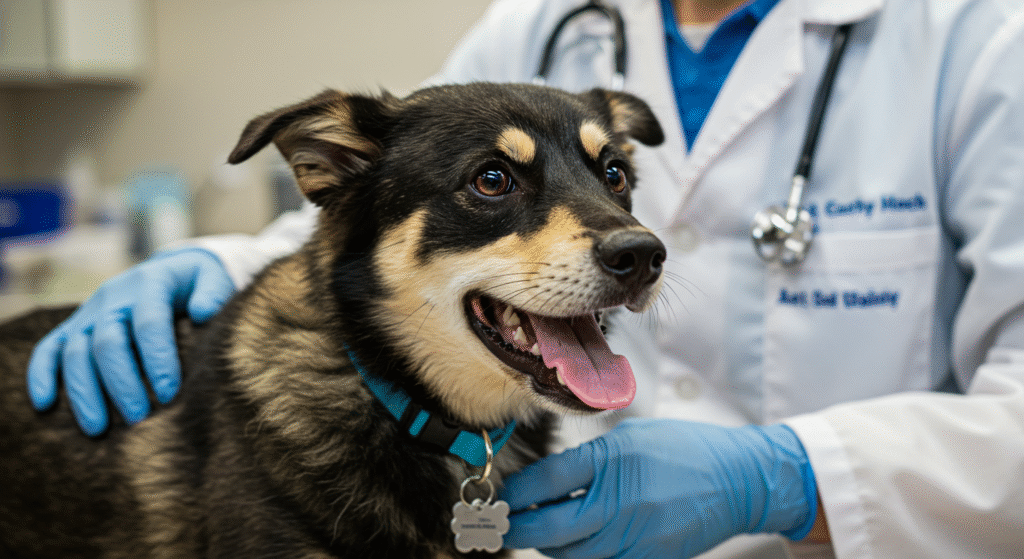
When to See a Veterinarian
Seek vet care if you notice:
- Persistent bad odor
- Bloody or pus-like discharge
- Sudden head tilting or balance issues
- Excessive pain when touching ears
- No improvement after at-home cleaning
FAQs About Dog Ear Cleaning
Q1: How often should I clean my dog’s ears?
It depends on the breed, activity level, and ear shape—typically every 1–4 weeks.
Q2: Can I use baby wipes to clean my dog’s ears?
No, baby wipes may contain chemicals unsafe for dogs. Use vet-approved products.
Q3: Is ear hair plucking necessary?
Not always. Some breeds need it, but consult your vet first.
Q4: What if my dog hates ear cleaning?
Start slow, use treats, and make it a positive experience. You can also ask your vet or groomer for help.
Q5: Can dirty ears cause hearing loss?
Yes, untreated infections and buildup can damage hearing.
Q6: Can I use coconut oil in my dog’s ears?
Coconut oil can soothe irritation but should not replace ear cleaners.
Q7: What is the safest ear cleaner for dogs?
A vet-recommended, alcohol-free solution designed specifically for dogs.
Q8: Can ear problems be linked to allergies?
Yes, many dogs with skin allergies also suffer from recurring ear infections.
Q9: Should I clean my dog’s ears after every bath?
Yes, always dry and clean lightly after baths or swims to prevent moisture buildup.
Q10: What happens if I never clean my dog’s ears?
Wax, dirt, and bacteria will accumulate, leading to chronic infections and possible hearing loss.
Conclusion
Dog ear cleaning may seem intimidating at first, but with the right tools and routine, it becomes a quick and rewarding habit. By paying attention to signs of discomfort, keeping up with regular cleaning, and seeking veterinary help when necessary, you can ensure your dog stays healthy, comfortable, and infection-free.
Remember: Healthy ears = a happy dog. 🐶💙
